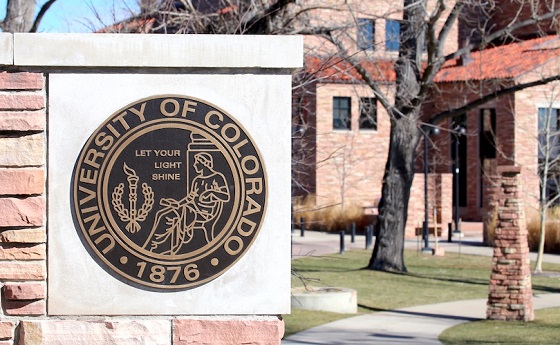COVID-19
Australian doctor who criticized COVID jabs has his suspension reversed

From LifeSiteNews
By David James
‘I am free, I am no longer suspended. I can prescribe Ivermectin, and most importantly – and this is what AHPRA is most afraid of – I can criticize the vaccines freely … as a medical practitioner of this country,’ said COVID critic Dr. William Bay.
A long-awaited decision regarding the suspension of the medical registration of Dr William Bay by the Medical Board of Australia has been handed down by the Queensland Supreme Court. Justice Thomas Bradley overturned the suspension, finding that Bay had been subject to “bias and failure to afford fair process” over complaints unrelated to his clinical practice.
The case was important because it reversed the brutal censorship of medical practitioners, which had forced many doctors into silence during the COVID crisis to avoid losing their livelihoods.
Bay and his supporters were jubilant after the decision. “The judgement in the matter of Bay versus AHPRA (Australian Health Practitioner Regulation Agency) and the state of Queensland has just been handed down, and we have … absolute and complete victory,” he proclaimed outside the court. “I am free, I am no longer suspended. I can prescribe Ivermectin, and most importantly – and this is what AHPRA is most afraid of – I can criticize the vaccines freely … as a medical practitioner of this country.”
Bay went on: “The vaccines are bad, the vaccines are no good, and people should be afforded the right to informed consent to choose these so-called vaccines. Doctors like me will be speaking out because we have nothing to fear.”
Bay added that the judge ruled not only to reinstate his registration, but also set aside the investigation into him, deeming it invalid. He also forced AHPRA to pay the legal costs. “Everything is victorious for myself, and I praise God,” he said.
The Australian Health Practitioner Regulation Agency (AHPRA), which partners the Medical Board of Australia, is a body kept at arm’s length from the government to prevent legal and political accountability. It was able to decide which doctors could be deregistered for allegedly not following the government line. If asked questions about its decisions AHPRA would reply that it was not a Commonwealth agency so there was no obligation to respond.
The national board of AHPRA is composed of two social workers, one accountant, one physiotherapist, one mathematician and three lawyers. Even the Australian Medical Association, which also aggressively threatened dissenting doctors during COVID, has objected to its role. Vice-president Dr Chris Moy described the powers given to AHPRA as being “in the realms of incoherent zealotry”.
This was the apparatus that Bay took on, and his victory is a significant step towards allowing medical practitioners to voice their concerns about Covid and the vaccines. Until now, most doctors, at least those still in a job, have had to keep any differing views to themselves. As Bay suggests, that meant they abrogated their duty to ensure patients gave informed consent.
Justice Bradley said the AHPRA board’s regulatory role did not “include protection of government and regulatory agencies from political criticism.” To that extent the decision seems to allow freedom of speech for medical practitioners. But AHPRA still has the power to deregister doctors without any accountability. And if there is one lesson from Covid it is that bureaucrats in the Executive branch have little respect for legal or ethical principles.
READ: More scientists are supporting a swift recall of the dangerous COVID jabs
It is to be hoped that Australian medicos who felt forced into silence now begin to speak out about the vaccines, the mandating of which has coincided with a dramatic rise in all-cause mortality in heavily vaccinated countries around the world, including Australia. This may prove psychologically difficult, though, because those doctors would then have to explain why they have changed their position, a discussion they will no doubt prefer to avoid.
The Bay decision has implications for the way the three arms of government: the legislature, the executive and the judiciary, function in Australia. There are supposed to be checks and balances, but the COVID crisis revealed that, when put under stress, the separation of powers does not work well, or at all.
During the crisis the legislature routinely passed off its responsibilities to the executive branch, which removed any voter influence because bureaucrats are not elected. The former premier of Victoria, Daniel Andrews, went a step further by illegitimately giving himself and the Health Minister positions in the executive branch, when all they were entitled to was roles in the legislature as members of the party in power. This appalling move resulted in the biggest political protests ever seen in Melbourne, yet the legislation passed anyway.
The legislature’s abrogation of responsibility left the judiciary as the only branch of government able to address the abuse of Australia’s foundational political institutions. To date, the judges have disappointed. But the Bay decision may be a sign of better things to come.
READ: Just 24% of Americans plan to receive the newest COVID shot: poll
COVID-19
Trump DOJ seeks to quash Pfizer whistleblower’s lawsuit over COVID shots

From LifeSiteNews
The Justice Department attorney did not mention the Trump FDA’s recent admission linking the COVID shots to at least 10 child deaths so far.
The Trump Department of Justice (DOJ) is attempting to dismiss a whistleblower case against Pfizer over its COVID-19 shots, even as the Trump Food & Drug Administration (FDA) is beginning to admit their culpability in children’ s deaths.
As previously covered by LifeSiteNews, in 2021 the BMJ published a report on insider information from a former regional director of the medical research company Ventavia, which Pfizer hired in 2020 to conduct research for the company’s mRNA-based COVID-19 shot.
The regional director, Brook Jackson, sent BMJ “dozens of internal company documents, photos, audio recordings, and emails,” which “revealed a host of poor clinical trial research practices occurring at Ventavia that could impact data integrity and patient safety […] We also discovered that, despite receiving a direct complaint about these problems over a year ago, the FDA did not inspect Ventavia’s trial sites.”
According to the report, Ventavia “falsified data, unblinded patients, employed inadequately trained vaccinators, and was slow to follow up on adverse events reported in Pfizer’s pivotal phase III trial.” Overwhelmed by numerous problems with the trial data, Jackson filed an official complaint with the FDA.
Jackson was fired the same day, and Ventavia later claimed that Jackson did not work on the Pfizer COVID-19 shot trial; but Jackson produced documents proving she had been invited to the Pfizer trial team and given access codes to software relating to the trial. Jackson filed a lawsuit against Pfizer for violating the federal False Claims Act and other regulations in January 2021, which was sealed until February 2022. That case has been ongoing ever since.
Last August, U.S. District Judge Michael Truncale dismissed most of Jackson’s claims with prejudice, meaning they could not be refiled. Jackson challenged the decision, but the Trump DOJ has argued in court to uphold it, Just the News reports, with DOJ attorney Nicole Smith arguing that the case concerns preserving the government’s unfettered power to dismiss whistleblower cases.
The rationale echoes a recurring trend in DOJ strategy that Politico described in May as “preserving executive power and preventing courts from second-guessing agency decisions,” even in cases that involve “backing policies favored by Democrats.”
Jackson’s attorney Warner Mendenhall responded that the administration “really sort of made our case for us” in effectively admitting that DOJ is taking the Fair Claims Act’s “good cause” standard for state intervention to mean “mere desire to dismiss,” which infringes on his client’s “First Amendment right to access the courts, to vindicate what she learned.”
Mendenhall added that in a refiled case, Jackson “may be able to bring a very different case along the same lines, but with the additional information” to prove fraud, whereas rejection would send the message that “if fraud involves government complicity, don’t bother reporting it.”
That additional information would presumably include the FDA’s recent admission that at least 10 children the agency has reviewed so far “died after and because of receiving COVID-19 vaccination.”
“The truth is we do not know if we saved lives on balance,” admitted FDA Chief Medical Officer Vinay Prasad in a recent leaked email. “It is horrifying to consider that the U.S. vaccine regulation, including our actions, may have harmed more children than we saved. This requires humility and introspection.”
The COVID shots have been highly controversial ever since the first Trump administration’s Operation Warp Speed initiative prepared and released them in a fraction of the time any previous vaccine had ever been developed and tested. As LifeSiteNews has extensively covered, a large body of evidence has steadily accumulated over the past five years indicating that the COVID jabs failed to prevent transmission and, more importantly, carried severe risks of their own.
Ever since, many have intently watched and hotly debated what President Donald Trump would do about the situation upon his return to office. Though he never backed mandates like former President Joe Biden did, for years Trump refused to disavow the shots to the chagrin of his base, seeing Operation Warp Speed as one of his crowning achievements. At the same time, during his latest run he embraced the “Make America Healthy Again” movement and its suspicion of the medical establishment more broadly.
So far, Trump’s second administration has rolled back several recommendations for the shots but not yet pulled them from the market, despite hiring several vocal critics of the COVID establishment and putting the Department of Health & Human Services under the leadership of America’s most prominent anti-vaccine advocate, Robert F. Kennedy Jr. Most recently, the administration has settled on leaving the current jabs optional but not supporting work to develop successors.
In a July interview, FDA Commissioner Marty Makary asked for patience from those unsatisfied by the administration’s handling of the shots, insisting more time was needed for comprehensive trials to get more definitive data.
COVID-19
University of Colorado will pay $10 million to staff, students for trying to force them to take COVID shots

From LifeSiteNews
The University of Colorado Anschutz School of Medicine caused ‘life-altering damage’ to Catholics and other religious groups by denying them exemptions to its COVID shot mandate, and now the school must pay a hefty settlement.
The University of Colorado’s Anschutz School of Medicine must pay more than $10.3 million to 18 plaintiffs it attempted to force into taking COVID-19 shots despite religious objections, in a settlement announced by the religious liberty law firm the Thomas More Society.
As previously covered by LifeSiteNews, in April 2021, the University of Colorado (UC) announced its requirement that all staff and students receive COVID jabs, leaving specific policy details to individual campuses. On September 1, 2021, it enforced an updated policy stating that “religious exemption may be submitted based on a person’s religious belief whose teachings are opposed to all immunizations,” but required not only a written explanation why one’s “sincerely held religious belief, practice of observance prevents them” from taking the jabs, but also whether they “had an influenza or other vaccine in the past.”
On September 24, the policy was revised to stating that “religious accommodation may be granted based on an employee’s religious beliefs,” but “will not be granted if the accommodation would unduly burden the health and safety of other Individuals, patients, or the campus community.”
In practice, the school denied religious exemptions to Catholic, Buddhist, Eastern Orthodox, Evangelical, Protestant, and other applicants, most represented by Thomas More in a lawsuit contending that administrators “rejected any application for a religious exemption unless an applicant could convince the Administration that her religion ‘teaches (them) and all other adherents that immunizations are forbidden under all circumstances.’”
The UC system dropped the mandate in May 2023, but the harm had been done to those denied exemptions while it was in effect, including unpaid leave, eventual firing, being forced into remote work, and pay cuts.
In May 2024, a three-judge panel of the U.S. Tenth Circuit Court of Appeals rebuked the school for denying the accommodations. Writing for the majority, Judge Allison Eid found that a “government employer may not punish some employees, but not others, for the same activity, due only to differences in the employee’s religious beliefs.”
Now, Thomas More announces that year-long settlement negotiations have finally secured the aforementioned hefty settlement for their clients, covering damages, tuition costs, and attorney’s fees. It also ensured the UC will agree to allow and consider religious accommodation requests on an equal basis to medical exemption requests and abstain from probing the validity of applicants’ religious beliefs in the future.
“No amount of compensation or course-correction can make up for the life-altering damage Chancellor Elliman and Anschutz inflicted on the plaintiffs and so many others throughout this case, who felt forced to succumb to a manifestly irrational mandate,” declared senior Thomas More attorney Michael McHale. “At great, and sometimes career-ending, costs, our heroic clients fought for the First Amendment freedoms of all Americans who were put to the unconscionable choice of their livelihoods or their faith during what Justice Gorsuch has rightly declared one of ‘the greatest intrusion[s] on civil liberties in the peacetime history of this country.’ We are confident our clients’ long-overdue victory indeed confirms, despite the tyrannical efforts of many, that our shared constitutional right to religious liberty endures.”
On top of the numerous serious adverse medical events that have been linked to the COVID shots and their demonstrated ineffectiveness at reducing symptoms or transmission of the virus, many religious and pro-life Americans also object to the shots on moral grounds, due to the ethics of how they were developed.
According to a detailed overview by the pro-life Charlotte Lozier Institute, Pfizer, Moderna, and Johnson & Johnson all used fetal cells derived from aborted babies during their COVID shots’ testing phase; and Johnson & Johnson also used the cells during the design and development and production phases. The American Association for the Advancement of Science’s journal Science and even the left-wing “fact-checking” outlet Snopes have also admitted the shots’ abortion connection, which gives many a moral aversion to associating with them.
Catholic World Report notes that similarly large sums have been won in other high-profile lawsuits against COVID shot mandates, including $10.3 million to more than 500 NorthShore University HealthSystem employees in 2022 and $12.7 million to a Catholic Michigander fired by Blue Cross Blue Shield in 2024.
-

 espionage2 days ago
espionage2 days agoWestern Campuses Help Build China’s Digital Dragnet With U.S. Tax Funds, Study Warns
-

 Focal Points1 day ago
Focal Points1 day agoCommon Vaccines Linked to 38-50% Increased Risk of Dementia and Alzheimer’s
-

 Automotive23 hours ago
Automotive23 hours agoThe $50 Billion Question: EVs Never Delivered What Ottawa Promised
-

 Business2 days ago
Business2 days agoCanada invests $34 million in Chinese drones now considered to be ‘high security risks’
-

 Health1 day ago
Health1 day agoThe Data That Doesn’t Exist
-

 Economy2 days ago
Economy2 days agoAffordable housing out of reach everywhere in Canada
-

 Business17 hours ago
Business17 hours agoStorm clouds of uncertainty as BC courts deal another blow to industry and investment
-

 Business1 day ago
Business1 day agoThe Climate-Risk Industrial Complex and the Manufactured Insurance Crisis




